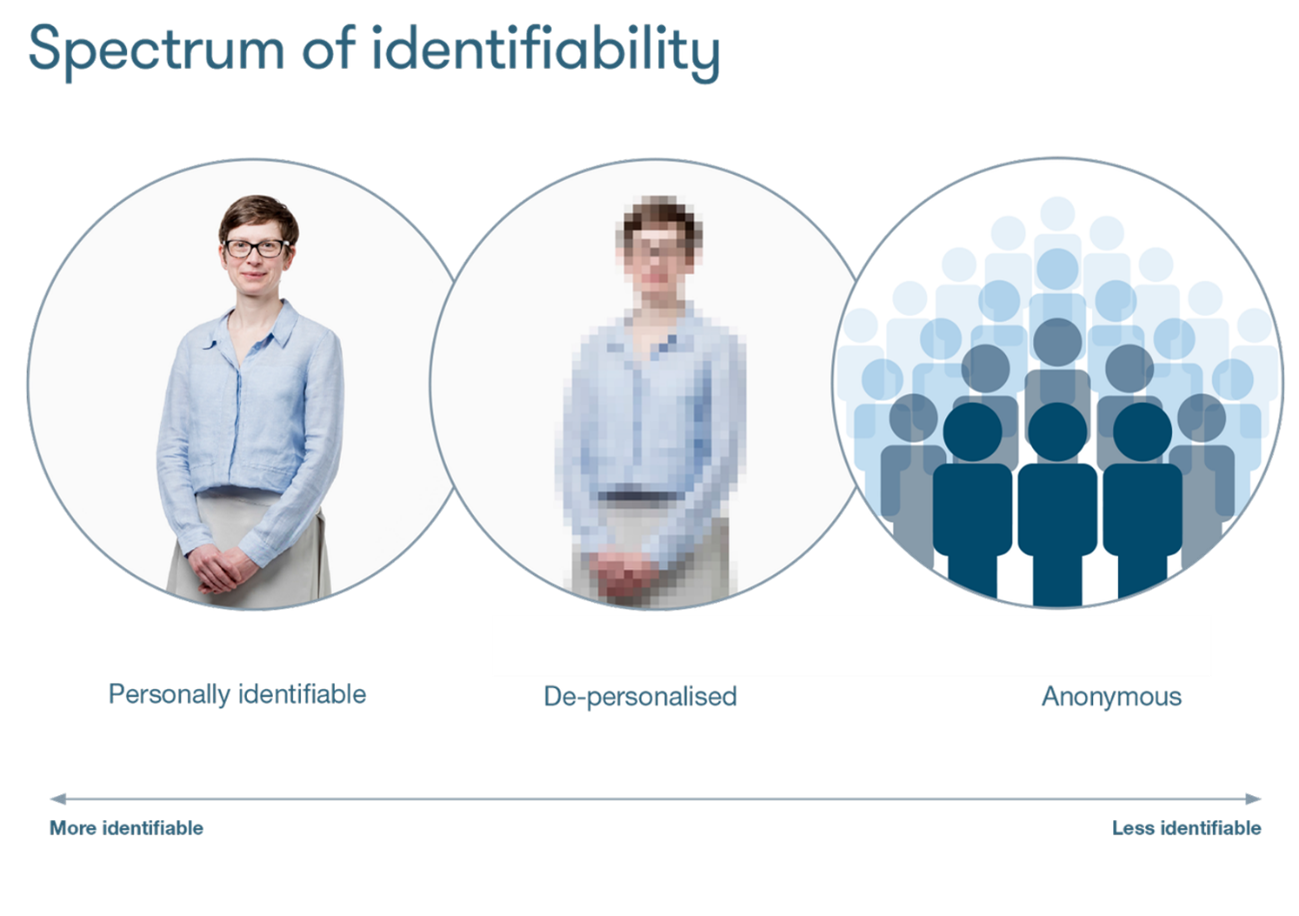There are a lot of ways to describe data and information. Different words, some of which are unnecessarily technical, are used to describe the same thing. There might also be subtle differences in meaning / interpretation between these words and sometimes their use might depend on the users (e.g. within a company or sector…).
Data or information
There is a technical difference between these 2 terms but they are often used interchangeably. ‘Data’ makes people think about numbers and codes, whereas information is broader.
Patient data
Data is collected every time a patient has contact with a health and care organisation. It falls into three broad categories:
- Demographic, like name, address, contact details and NHS number.
- Administrative, like details of appointments, or whether they are waiting for a place in a health and care setting such as a care home or hospital ward.
- Medical, like information such as symptoms, diagnosis, weight, medicines, treatments and allergies.
Confidential patient data
Confidential patient data is information that both identifies the patient, and includes some information about their medical condition or treatment.
The term 'confidential patient information' is a legal term defined in section 251 (11) of the National Health Service Act 2006. It is information about any patient, alive or dead, that meets the following 3 requirements. It meets the definition if the information:
- Is identifiable or likely to be identifiable, for example from other data likely to be held by the person or organisation receiving the data - if a patient could be identified from it.
- Was given in circumstances where the individual is owed an obligation of confidence. Patients are entitled to expect an obligation of confidence from the health and care services they receive.
- Conveys some information about the physical or mental health or condition of an individual, a diagnosis of their condition, or information on their care or treatment.
Identifiable, anonymised and anonymous data
Identifiable is on a grey scale while the law is binary. Identifiability depends on both:
- Content. The information held contains weak and/or strong identifiers, which can used alone or in combination to identify an individual.
- Context, for example what other information do you have? Is it rare or unusual information (e.g. rare genetic disease)?
Anonymous vs anonymised data
- Anonymous means that all potential identifiers have been removed. The data cannot be used to directly identify individuals and where re-identification is not likely to take place.
- Anonymised data contains weak identifier(s). This means that identification is not reasonably likely when attempted by a “motivated intruder”. “De-personalised“ is a new patient-friendly term used for “anonymised” and is not a legal term.
 ‘Identifiability spectrum’ by Understanding Patient Data can be reused under the CC-BY licence.
‘Identifiability spectrum’ by Understanding Patient Data can be reused under the CC-BY licence.
You can find out more on the Understanding Patient Data website.